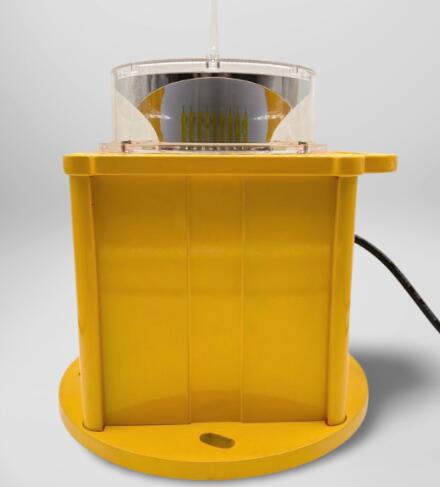Heliport Beacon Light: The Pulsating Heart of Vertical Aviation Safety
In the precise world of vertical aviation infrastructure, heliport beacon lights serve as critical visual guidance systems that enable safe helicopter operations across diverse environments. These specialized lighting devices form the core of heliport identification systems, providing unmistakable visual cues that guide pilots during approach, landing, and departure phases. The technological sophistication embedded in modern heliport beacon lights represents a meticulous integration of optical engineering, advanced materials, and aviation safety protocols that must perform flawlessly under the most demanding conditions.
Heliport beacon lights are designed to meet specific operational requirements that distinguish them from other aviation warning systems. These devices typically employ brilliant white xenon strobes or high-intensity LED arrays that create distinctive flash patterns easily recognizable to helicopter pilots. The characteristic flashing sequence—often featuring dual pulses or specific rhythm patterns—provides positive identification of heliport locations while differentiating from other aerial warning systems. This unique visual signature is essential in urban environments where multiple light sources might otherwise create confusion for pilots navigating complex airspace.

The engineering behind heliport beacon lights addresses exceptional technical challenges related to both performance and durability. These systems must maintain precise photometric characteristics while withstanding constant exposure to rotor downwash, vibration, and weather extremes. Housing designs utilize aerospace-grade aluminum alloys with advanced powder coatings that resist corrosion from aviation fuels, de-icing fluids, and environmental elements. Hermetic sealing technologies protect internal components from moisture intrusion while managing heat dissipation from high-intensity light sources. The mechanical construction includes specialized vibration-dampening mounts that ensure optical alignment remains perfect despite continuous rotor-induced vibrations.
| heliport beacon light |
Optical system design represents a particularly advanced aspect of heliport beacon light technology. Modern systems incorporate precision-engineered reflectors and Fresnel lenses that maximize light output while controlling distribution patterns to ensure optimal visibility from all approach angles. The transition to LED technology has revolutionized these systems through enhanced reliability, reduced power consumption, and precise control over flash characteristics. Sophisticated thermal management systems maintain optimal operating temperatures through heat sinks and passive cooling designs, ensuring consistent performance during extended operation periods.
Installation planning for heliport beacon lights requires careful consideration of multiple factors including heliport classification, surrounding obstacles, and approach paths. Elevated heliports on hospital rooftops present different requirements than ground-level facilities in industrial areas. Engineers must calculate precise mounting positions that provide maximum visibility without creating glare issues for pilots or surrounding communities. The integration of these systems with other heliport lighting—including perimeter lights, floodlights, and touchdown position indicators—creates a comprehensive visual environment that supports safe operations in all weather conditions.
Control and monitoring systems for heliport beacon lights have evolved into intelligent networks that ensure reliability and simplify maintenance. Modern systems feature light-sensitive photocells that automatically activate at dusk and deactivate at dawn, with manual override capabilities for testing and emergency operations. Advanced monitoring systems provide remote status alerts for lamp failures, power issues, or system malfunctions, enabling prompt maintenance response. These systems often integrate with broader heliport management networks, allowing operators to monitor and control lighting from centralized locations.
Regulatory compliance forms the fundamental framework for heliport beacon light design and operation. Aviation authorities including the FAA, EASA, and ICAO establish detailed specifications for light intensity, flash characteristics, color values, and system reliability. These regulations are continuously updated based on operational experience and technological advancements. Compliance verification involves rigorous testing by certified laboratories and ongoing maintenance of detailed performance records. Documentation requirements include regular photometric testing and maintenance logs that support comprehensive safety management systems.
Environmental considerations have significantly influenced heliport beacon light design in recent years. Manufacturers have developed advanced shielding systems that minimize light pollution while maintaining required visibility for aviation safety. The transition to LED technology has dramatically reduced energy consumption, while smart control systems further optimize power usage based on actual operational needs. These environmental improvements have facilitated installations in noise-sensitive and environmentally constrained areas while maintaining the highest safety standards.
Future developments in heliport beacon light technology focus on enhanced integration with other aviation systems and improved operational capabilities. Research continues into systems that can automatically adjust intensity based on real-time weather conditions or aircraft proximity. The integration of beacon lights with unmanned aircraft system traffic management presents new opportunities for dynamic lighting control that responds to specific operational requirements. Advancements in materials science may yield more efficient thermal management systems and improved resistance to environmental factors.
In the rapidly evolving field of urban air mobility, heliport beacon lights are adapting to support new operational concepts including vertiports and multi-aircraft landing facilities. These applications require specialized lighting solutions that accommodate increased traffic density while integrating with advanced air traffic management systems. The development of these next-generation systems involves close collaboration between aviation authorities, technology providers, and urban planners to ensure safe integration of advanced air mobility concepts into existing infrastructure.
In conclusion, heliport beacon lights represent a sophisticated fusion of optical engineering, materials science, and aviation safety requirements. These systems have evolved from simple warning devices into intelligent safety systems that actively contribute to collision prevention and operational efficiency. As urban air mobility continues to expand and helicopter operations become more complex, the role of heliport beacon lights will remain essential for maintaining safety in vertical aviation. Through continuous technological innovation and rigorous adherence to safety standards, these lighting systems will continue to enable safe and efficient helicopter operations in increasingly complex airspace environments.
